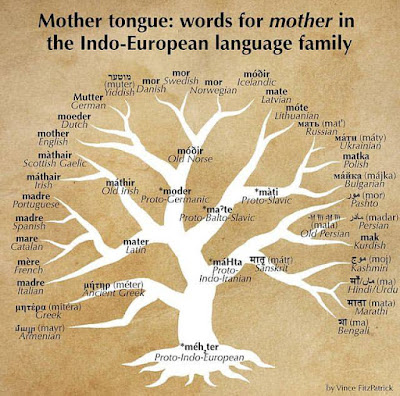Shared Ancestors and Ancestors of Place
I am afraid it is a bit of unfortunate business that sparked me on this thought train, but just the same, the idea is still a useful one and something worth sharing. I have been thinking a lot about ancestor veneration lately, but not on the individual level, on the community level.
A tribe that shares frith, shares ancestors. Our lives are irrefutably linked. But our ancestors help to create cohesion and belonging within the group. They seek to make us better and improve our luck. They seek to help us heal what needs to be healed, so that we can grow as a community.
Even on the larger community level there are shared ancestors. These take the form of local folk heroes or ancestors of place that are publicly venerated. (Often without all the members of the community who are venerating them really understanding what they are doing.) For people who are not familiar with ancestor veneration as a common practice, they don’t recognize it, and yet feel drawn to participate in it, even without fully understanding. There is this intense need for belonging. And an intuitive pull to venerate these beings in the same way that they witness other people to have done so.
On the national level, think of the Tomb of the Unknown Soldier. Everyone knows to leave their poppy there on Remembrance Day. I think though, that on a more local level things get even more interesting. The grave of Louis Riel, for example, gets many visitors every day, and people are always leaving gifts there. Tobacco, food, candles, money, flowers… many different gifts. Not all the people leaving items there are from the Métis people, but they feel the connection to this person, to the history of this place. To some Louis Riel was a traitor, and to others he was a Father of Confederation. His actions definitely helped to shape Manitoba. People feel that pull to his story and to our shared history as a community.
Another example I can think of in Manitoba is at Bannock Point Petroforms. The Petroforms have existed for thousands of years and are a sacred site to the Indigenous peoples of this region. The Petroforms are in a provincial park and are public access. Even visitors who don’t understand their history feel drawn to leave items in the rock in the entrance way to the site (and also in other places on the site) to the point that this rock is overflowing with the gifts people have left there.
The problem with ancestor veneration in modern times stems from not understanding it mainly. (At least from my view.) And what I mean by that is that as humankind we long for that feeling of connection, but without understanding it and engaging it in a healthy way, we are left open to others using it against us. Engaging in ancestor veneration for the folk heroes and ancestors of place that I listed above is healthy enough, but we must take caution that not all ancestors are well ancestors, and worthy of our veneration. We can seek to collectively heal these ancestors, but to venerate them without healing is to make ourselves equally as unwell.
The simplest way to determine if ancestors are well or unwell if you are new to ancestor veneration is to determine if the veneration of those ancestors would lead to bringing people together or keeping them apart. Are you venerating someone who would seek to keep you separated from other members of the community based on religion, race, gender, class, or sexuality? Are you venerating someone because you have been told the narrative that your bloodline or genetics are an important proponent of the Heathen faith? Are people being excluded from your practice based on things that they have no power to change about themselves?
If you are practicing with a group and the shared ancestor you are being asked to venerate is someone who would actively seek to divide people, then you need to take a step back. What are the motives behind this rite? Who is gaining from it? Who is being harmed? Think long and hard about what is going on in this group. There are people who will seek to manipulate your desire for a sense of belonging in order to have you serve their own agendas. Remember that your belonging should never be at the expense of the exclusion of others. You deserve a supportive and well community, and they are out there. You can find them. Don’t let yourself be limited into thinking the first community you find is your only choice. If you are sacrificing your values to belong, then it is not the right community for you. Keep searching. Don’t give up. If all else fails, start your own community. People will find you.
A shared ancestor is meant to be just that, shared. To bring people of a community together in shared history for the benefit of all. If you ever go to a place where large scale ancestor veneration of a well ancestor occurs, you will feel it. You can feel the footsteps on the ground of thousands of people who came there before you, all connected to you through that place and that shared ancestor. That experience transcends the silly categories we place on each other to divide. It humbles you to your connection to a much larger web of wyrd, to your interconnection with that place and all beings that share it.
Further Reading:
"Threads of Wyrd and Scyld: A Ninefold Rite of Life Renewal" by Winifred Hodge Rose https://heathensoullore.net/threads-of-wyrd-and-scyld-a-ninefold-rite-of-life-renewal/
Image Source:
“Spirited Skies” by Lindsay Ohlert (Creative Commons)



